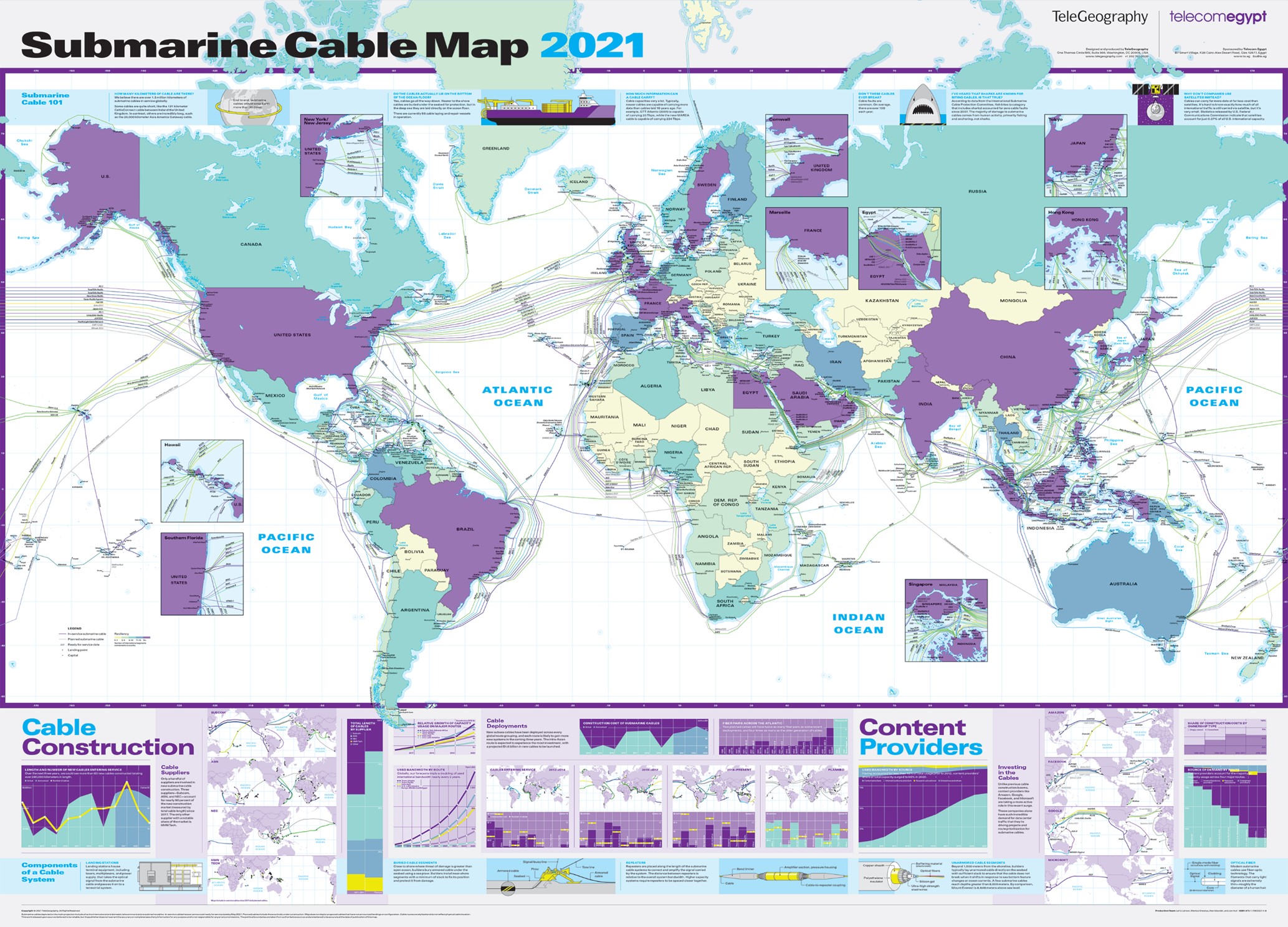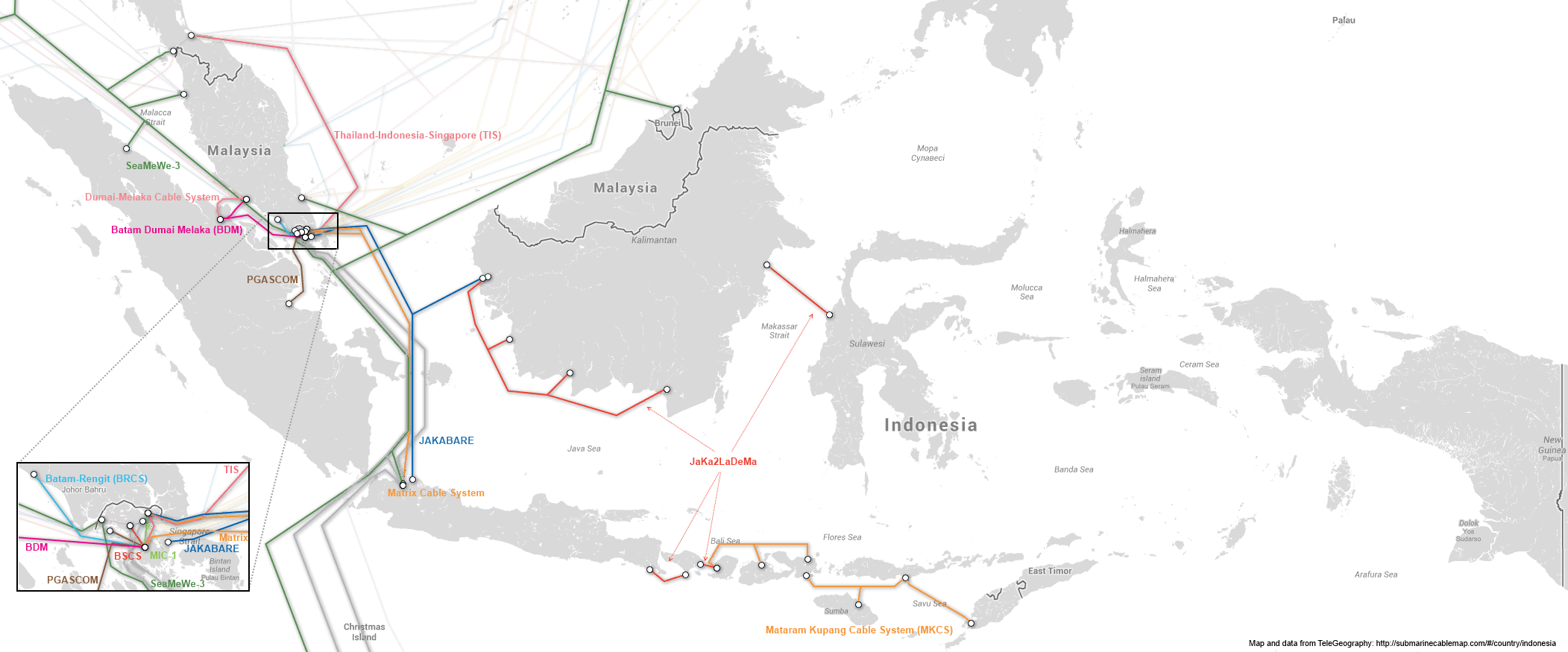

It isn’t easy to take down large parts of the internet. The UK has also claimed Russian submarines have been monitoring cables landing in the country.ĭespite the dangers, the internet is built on resilience.

Following the Nord Stream gas pipeline explosions, governments around the world have pledged to better protect underwater infrastructure and subsea cables. However, in recent months, there have been growing concerns about sabotage. The majority of these are caused by shipping or environmental damage. Every year, there are more than 100 incidents where the cables are cut or damaged. Subsea cables are relatively fragile and easily damaged. The cables travel across land among multiple different routes-and do not go in the Suez Canal-so there is variation in how they are spread out. The company charges cable owners for running cables across the country. When the submarine cables appear above land, at the very north of the Red Sea and the Gulf of Suez, Telecom Egypt, the country’s main internet provider, is involved. “At the same time, you have to balance that with the need to have diversity. “There are values in concentration because you want networks to connect to each other,” Mauldin says. However, there are reasons beyond costs to have multiple cables pass through the Red Sea. Mauldin says the Egyptian region can be considered a single point of failure due to the number of cables in one place. “The Malacca Strait is also a problem area, but I don't think it's as bad as Egypt,” SAEx’s Thomas says. The UK, Singapore, and France are all key internet connection points, with the Strait of Malacca, near Singapore, being another chokepoint. The region isn’t the only cable choke point around the world.

Other nearby cables also faced outages in the same year. In 2013, the Egyptian navy arrested three people who were allegedly cutting internet cables in the region. “The Red Sea is a fairly shallow body of water, and there's been historically a lot of cable cuts there as a result,” Madory says. Subsea cables connect New York to London and Australia to Los Angeles.ĭisruption also happens around the Red Sea itself. The global network of underwater cables forms a large part of the internet’s backbone, carrying the majority of data around the world and eventually linking up to the networks that power cell towers and Wi-Fi connections.
SUBMARINE CABLE MAP FROM NYC TO LONDON PLUS
While connectivity was restored in a few hours, the disruption highlights the fragility of the world’s 550-plus subsea internet cables, plus the outsized role Egypt and the nearby Red Sea have in the internet’s infrastructure. “The worst was Ethiopia, that lost 90 percent of its connectivity, and Somalia thereafter also 85 percent.” Cloud services belonging to Google, Amazon, and Microsoft were all also disrupted, subsequent analysis revealed. “It affected about seven countries and a number of over-the-top services,” says Rosalind Thomas, the managing director of SAEx International Management, which plans to create a new undersea cable connecting Africa, Asia, and the US. One other cable was also damaged in the incident, with the cause of the damage unknown. The cable, also known as AAE-1, was severed where it briefly passes across land through Egypt.
SUBMARINE CABLE MAP FROM NYC TO LONDON OFFLINE
When the cable was cut on June 7, millions of people were plunged offline and faced temporary internet blackouts. As it snakes through the South China Sea and toward Europe, the cable helps provide internet connections to more than a dozen countries, from India to Greece. The four hubs offer ultra fiber optic connections to New York and all other strategic hubs around the world.The Asia-Africa-Europe-1 internet cable travels 15,500 miles along the seafloor, connecting Hong Kong to Marseille, France. Our network includes a fiber-optic cable from Haifa-Israel to Marseille-France, without any segments overland and with a ring connection to the main worldwide web hubs: Marseille, London, Amsterdam and Frankfurt. Having deployed the newest and most innovative network, we are proud to offer the best, resilient, durable and shortest path between Israel and Europe. We continuously invest efforts in maintaining and further improving our service portfolio. Through-data traffic to New York and other North American locations are best served from London Exchange.Ĭoupled with a built-in element redundancy, Tamares’ network offers speed and availability. Our most popular routes from Israel (Tirat Hacarmel PoP) are: Frankfurt, London, New York, Hong Kong and Mumbai. Tamares Telecom fiber-optic network offers the fastest and most optimal route plan for the ever-increasing destinations’ connectivity demand.


 0 kommentar(er)
0 kommentar(er)
